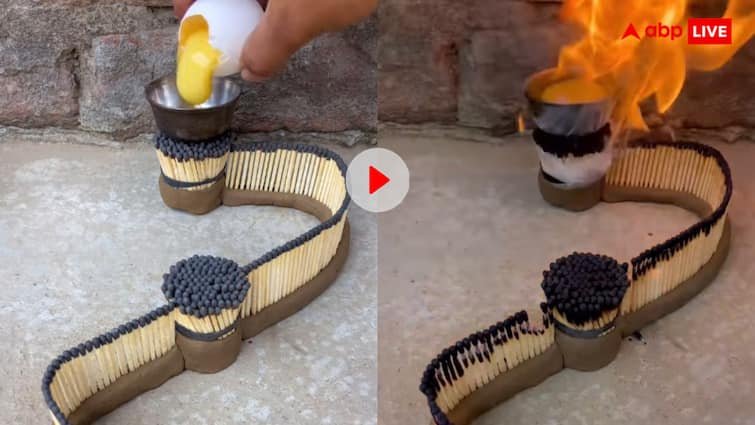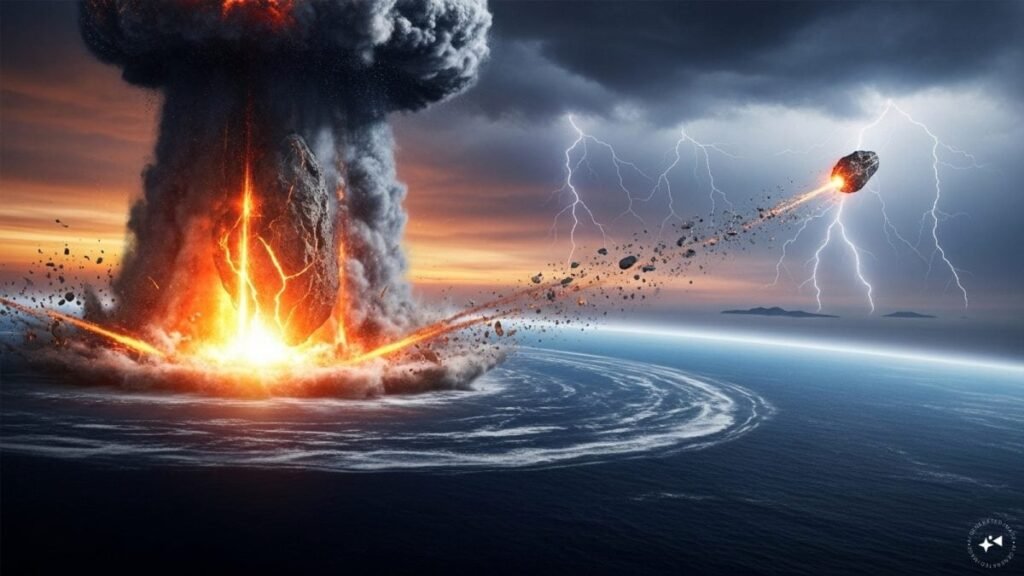Last update:
Scientists say that Silverpit Crater, 80 miles off the Yorkshire, was formed 43 million years ago through the effect of the asteroid, and ends contracts of debate about its origin under the North Sea.

Clarification from a large asteroid collides with the ground. (A copy of artificial intelligence)
He was buried in the depths of the sea floor, about 80 miles off the coast of Yorkshire, an extraordinary hole that divides the scientific opinion. Is it greatly formed through the effect of the asteroid, or simply due to the transformation of geological salt deposits?
Today, scientists believe that they have finally resolved the debate that lasted for decades: a SilverPit hole, which is 700 meters at the bottom of the North Sea, was most likely formed more than 43 million years ago by an asteroid or almost guilty of the MINSTER that struck the Earth.
Scientists say that the 160 -meter asteroid was crashed into the sea, causing a tsunami with a height of 100 meters, as scientists say. Perhaps it was very bad for any early mammals in the region, but not as bad as the consequences of the asteroid’s destruction that eliminated dinosaurs 66 million years ago.
Experts note that although the SilverPit nozzle is much smaller than the Chicxulub hole in Mexico, which was formed when it reaches an asteroid from 6 to 9 miles, struck the Earth and was about 75 % of plant and animal life, it remains great and of great importance like a hole with the only effect known near the current UK.
The new seismic photography gave them an unprecedented look at the hole.
He said that obtaining the evidence was “definitely an exciting moment,” describing the investigation as “a needle in the straw pile approach.”
In 2002, petroleum geologists discovered the hole in 2002, a two -mile depression surrounded by a 12 miles of circular breakdowns.
Those who found it believed to have already had an excessive impact impact on speed, indicating the properties often associated with it, including the central peak, circular shape and concentrated errors.
Initially, he was able to be more than 60 million years old, and the headlines were issued. “The hole can be an asteroid strike,” read the trustee report of that time.
However, some scientists were not convinced, on the pretext that it had a less interesting origin story, and it was likely to be caused by the movement of salt rocks in the depth.
“I feel that I spoiled the party,” the Guardian quoted Professor John And Sunder, from Edinburgh University, who led the skeptics at that time. “It is a less sparkling explanation, but this is what scientific data says.”
In 2009, there was a discussion in the geological association remembered by Nicholson. “I was a PhD student at the time, and it was a well -known discussion, within at least the geological circles.
“They held a big discussion, then they made a vote. They decided with an overwhelming majority that it was not impressive. Most people prefer worldly interpretation and I think it reflects a tendency to reject the most exciting interpretation.”
The 80-20 vote against the impact hypothesis ended, which prompted questions about whether geologists tend to be naturally conservative. “There are different types of geologists,” Nicholson commented. “Some say I am very excited about certain ideas.”
Nicholson was asked to look at SilverPit because of his experience in discovering another impact in West Africa.
Funded by the Natural Environmental Research Council, the Nicholson team used seismic photography, microscopic examination of rock squash, and numerical modeling to provide what they claim to be the most powerful evidence so far that SilverPit is an effect on Earth.
The effects of the asteroid are rare, fortunate, with nothing to register anything in the history of mankind. Nicholson explained that the drilling that they leave is also uncommon, as “the plate and corrosion tanks erase all the evidence for most of these events.” “There are about 200 confirmed drilling on Earth and only 33 are determined under the ocean.”
He said that SilverPit is exceptionally and important. “We can use these results to understand how the effects of the asteroid formed our planet throughout history, as well as predicting what can happen if an asteroid collision in the future.”
Click here To add news18 as your favorite news source on Google, the News18 is characterized by designing stories, videos, and memes, covering twisted accidents, social media from India and around the world, also download it News18 app To stay aware!
UK (UK)
Sep 20 2025, 22:47 is
Read more













